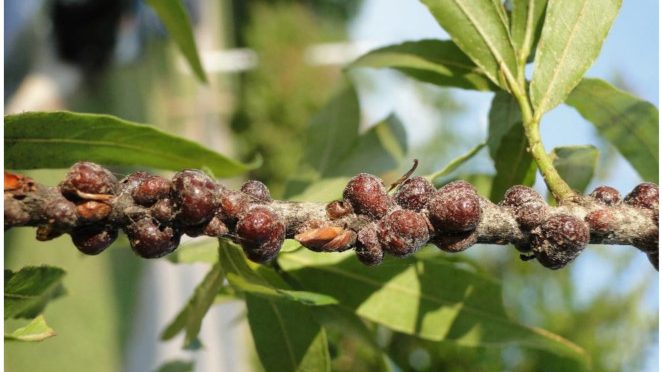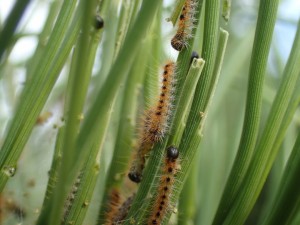Sleepless in the City: Urban Heat Wakes up Tree Pests

SE CASC PI, Steve Frank, and 2013-2014 Global Change Fellow, Michael Just, published a new SE CASC supported paper, Can Cities Activate Sleeper Species and Predict Future Forest Pests? A Case Study of Scale Insects, published in the journal Insects. The paper derived from work on projects, Consequences of Urbanization and Climate Change on Human and Ecosystem Health and Effects of Urbanization on the Conservation Value of Forests. The following summary was written by Michael Just for the EcoIPM Blog here.

Chances are the tree in your yard or next to your street has pests like aphids, spider mites, or scale insects. It’s not just you. Scientists and anyone who works with trees have known for a century that urban and suburban trees have more pests than forest trees. You might expect trees out in the ‘wild’ to be more exposed to pests than trees in our nice clean (some might say sterile) yards and parking lots. Our lab has studied why pests love urban trees for several years. It turns out that cities are hotter than forests because roads, sidewalks, and buildings absorb heat from the sun. Warmer temperatures actually help some insects grow bigger, produce more offspring, become more abundant, and live longer. These are the insects that become pests on urban but not forest trees.
Look closely at any urban or forest tree and you will find hundreds of insect and mite species scattered here and there feeding on leaves or sap. Most never become pests. A few species become pests only after some change in the environment – like warming temperatures. Species that become pests after warming are called sleeper species. We call them that because they can hang out for years or decades without causing problems, but then get “woken” up when warming increases their survival, development rate, or how many babies they have.

Examples of insects that have become serious pests with warming and caused havoc in forests include southern pine beetle and pine processionary moth. It would be helpful if we could identify which insects or mites might be forest sleeper species so we can prepare. This is difficult because most species go unnoticed until they become pests and then it is too late. So, how do we identify the sleeper species among us?
Since cities are already warmer than forests, perhaps the pests on urban trees are sleeper species that will become pests in forests with climate warming. That is, if they grow bigger, make more babies, and live longer where it’s warmer, like cities. We’ve worked a lot with insect pests in cities. We’ve found that gloomy scales (Melanaspis tenebricosa) in cities are bigger and produce more offspring with warming. We’ve also found that oak lecanium scales (Parthenolecanium quercifex) are way more abundant in the warmer parts of a city. This suggests that these species may become forest sleeper species with additional warming.

In a new paper, we explore these and other ways that these forest scale insects have become urban pests with warming. By noticing prominent urban tree pests we can not only help to manage pests in our backyards, but also prepare for those species that might threaten our future forests.
Read the full paper here:
Frank, S.D. and Just, M.G. (2020) Can cities activate sleeper species and predict future forest pests? A case study of scale insects. Insects, 11(3): 142. https://doi.org/10.3390/insects11030142
- Categories:
